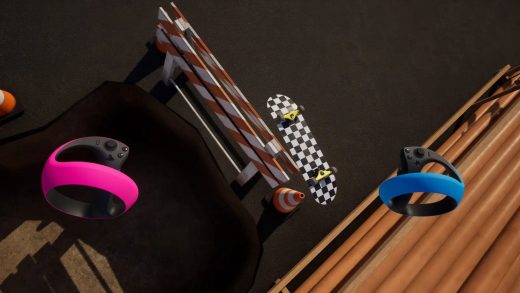The following article contains spoilers for Lower Decks, Season Four, Episode Ten.
Four seasons in, and you more or less know what you’ll get from a Star Trek: Lower Decks season finale. A hefty dose of in-jokes and references that conclude the season arc by pulling the Cerritos crew together. There’s a focus on teamwork over individual valor, and a belief that Starfleet’s mission is the right one. Add in a gag or two about how Star Trek is better when it’s slow and cerebral, add in a cliffhanger that threatens the show’s status quo, and you’re done.
Just because “Old Friends, New Planets” sticks to this formula, it doesn’t mean it isn’t good, and you’ll laugh plenty of times in the half hour. The show’s ability to wheel out a staggeringly left field comic premise like Twaining is one of its biggest strengths. But the episode is full of solid gags that work on a second or third re-watch, including the lampshading about who Locarno (Robert Duncan McNeill) does or does not look like.
Judged on its merits as an episode of Star Trek, and you’ll find it similarly-winning with great writing and direction. I can’t help but single out Chris Westlake’s score, whose work this season has been just as great as the last. It was wonderful, too, to see Shannon Fill and Wil Wheaton recruited for their cameos in Mariner’s flashback. Who else but a true devotee would make such an effort, and the show’s creative team led by Mike McMahan has an infectious love for Trek’s golden era.
It’s just that there’s also a sense of diminishing returns, or that the show needs to find a higher gear to operate in. The limits of a sitcom’s premise means you can’t do too much to up-end the status quo, but you can feel this desire for evolution. It’s the old trap: You can’t joke that the USS Cerritos isn’t important, and keep putting them in these high-stakes scenarios. Can you go back to fixing a warp manifold if your lead character just toppled a planet-threatening tyrant?
And now, an intervention.
Sadly, one thing bothered me about “Old Friends, New Planets,” which requires me to bring up Star Trek: Picard’s dreadful third season. I’m not relitigating matters here, but I am asking why two Trek series opted to do The Wrath of Khan homages in the same year. Isn’t spotting duplication like this and preventing it at the pre-production stage part of Franchise Overseer Alex Kurtzman’s job? Sure, he can’t be in every meeting, but surely this is why he’s credited as an executive producer on every Trek series currently running, right?
It was nice, however, that both series honored the late CGI artist Fabio Passaro.
It doesn’t help that back-to-back Wrath of Khan homages mere months apart look less like a show of admiration and more like a cry for help. When Star Trek’s creative well runs dry, it’s to Nicholas Meyer’s 1982 classic that they run to for inspiration. As I wrote back in February, the path to Khan is so well-worn I’m not sure there isn’t a single element that hasn’t been strip-mined to oblivion.
And while creatives pillage that film’s iconography, the person behind it has often been persona non grata in Trek circles. Meyer’s still around, and doing good work, but his Trek pitches haven’t had a look-in for a long while. I don’t know if it’s ageism, or if he’s awful in real life, but the fact his work is so popular yet he can’t get a look in feels unjust. And we still haven’t heard anything more about Ceti Alpha V, the Khan midquel podcast that was announced more than a year ago.
I think it’s time that we staged an intervention, and said that Star Trek is no longer allowed, even in jest, to pull anything from The Wrath of Khan. In fact, let’s make that broader, and say that we need to leave those toys in the box for a decade or more. And instead, let’s focus on telling new stories that people will be desperate to honor three or four decades in the future.


